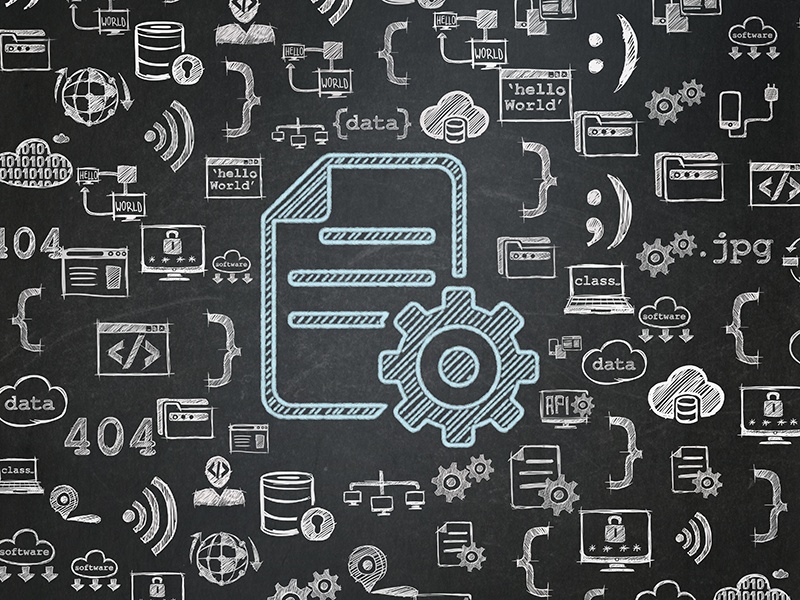This is the second in a two-part blog series on owning and transferring the rights to a patent. (Read part one here.)
As we discussed in the first post in this series, patent owners enjoy important legal and commercial benefits: They have the right to exclude others from making, selling, using, or importing the claimed invention, and to claim damages from anyone who infringes their patent.
However, a business entity can own a patent only if the inventors have assigned the patent rights to the business entity. So if your employees are creating valuable IP on behalf of your company, it’s important to get the patent assignment right, to ensure that your business is the patent owner.
In this post, we’ll take a closer look at what a patent assignment even is — and the best practices for approaching the process. But remember, assignment (or transfer of ownership) is a function of state law, so there might be some variation by state in how all this gets treated.
What Is a Patent Assignment and Why Does it Matter?
A patent assignment is an agreement where one entity (the “assignor”) transfers all or part of their right, title, and interest in a patent or application to another entity (the “assignee”).
In simpler terms, the assignee receives the original owner’s interest and gains the exclusive rights to pursue patent protection (through filing and prosecuting patent applications), and also to license and enforce the patent.
Ideally, your business should own its patents if it wants to enjoy the benefits of the patent rights. But under U.S. law, only an inventor or an assignee can own a patent, and businesses cannot be listed as an inventor. Accordingly, patent assignment is the legal mechanism that transfers ownership from the inventor to your business.
Patent Assignment vs. Licensing
Keep in mind that an assignment is different from a license. The difference is analogous to selling versus renting a house.
In a license agreement, the patent owner (the “licensor”) gives another entity (the “licensee”) permission to use the patented technology, while the patent owner retains ownership. Like a property rental, a patent license contemplates an ongoing relationship between the licensor and licensee.
In a patent assignment, the original owner permanently transfers its ownership to another entity. Like a property sale, a patent assignment is a permanent transfer of legal rights.
Using Employment Agreements to Transfer Patent Ownership
Before your employees begin developing IP, implement strong hiring policies that ensure your IP rights will be legally enforceable in the future.
If you’re bringing on a new employee, have them sign an employment agreement that establishes up front what IP the company owns — typically, anything the employee invents while under your employment. This part of an employment agreement is often presented as a self-contained document and referred to as a “Pre-Invention Assignment Agreement” (PIAA).
The employment agreement should include the following provisions:
- Advance assignment of any IP created while employed by your company, or using your company’s resources
- An obligation to disclose any IP created while employed by your company, or using your company’s resources
- An ongoing obligation to provide necessary information and execute documents related to the IP they created while employed, even after their employment ends
- An obligation not to disclose confidential information to third parties, including when the employee moves on to a new employer
To track the IP your employees create, encourage your employees to document their contributions by completing invention disclosure records.
But the paperwork can be quite involved, which is why your employment policies should also include incentives to create and disclose valuable IP.
Drafting Agreements for Non-Employees
Some of the innovators working for your business might not have a formal employer-employee relationship with the business. If you don’t make the appropriate arrangements beforehand, this could complicate patent assignments. Keep an eye out for the following staffing arrangements:
- Independent contractors: Some inventors may be self-employed, or they may be employed by one of your service providers.
- Joint collaborators: Some inventors may be employed by, say, a subsidiary or service company instead of your company.
- Anyone who did work through an educational institution: For example, Ph.D. candidates may not be employees of either their sponsoring institution or your company.
In these cases, you can still draft contractor or collaborator agreements using the same terms outlined above. Make sure the individual innovator signs it before beginning any work on behalf of your company.

Obtaining Written Assignments for New Patent Applications
In addition to getting signed employment agreements, you should also get a written assignment for each new patent application when it’s filed, in order to memorialize ownership of the specific patent property.
Don’t rely exclusively on the employment agreement to prove ownership:
- The employment agreement might contain confidential terms, so you don’t want to record them with the patent office
- Because employment agreements are executed before beginning the process of developing the invention, they won’t clearly establish what specific patent applications are being assigned
While you can execute the formal assignment for each patent application after the application has been filed, an inventor or co-inventor who no longer works for the company might refuse to execute the assignment.
As such, we recommend executing the assignment before filing, to show ownership as of the filing date and avoid complications (like getting signatures from estranged inventors).
How to Execute a Written Patent Agreement
Well-executed invention assignments should:
- Be in writing: Oral agreements to assign patent rights are typically not enforceable in the United States
- Clearly identify all parties: Include the names, addresses, and relationship of the assignor(s) and assignee
- Clearly identify the patent being assigned: State the patent or patent application number, title, inventors, and filing date
- Be signed by the assignors
- Be notarized: If notarization isn’t possible, have one or two witnesses attest to the signatures
Recording a Patent Assignment With the USPTO
Without a recorded assignment with the U.S. patent office, someone else could claim ownership of the issued patent, and you could even lose your rights in the issued patent in some cases.
So the patent owner (the Assignee) should record the assignment through the USPTO’s Assignment Recordation Branch. They can use the Electronic Patent Assignment System (EPAS) to file a Recordation Cover Sheet along with a copy of the actual patent assignment agreement.
They should submit this paperwork within three months of the assignment’s date. If it’s recorded electronically, the USPTO won’t charge a recordation fee.
Need to check who owns a patent? The USPTO website publicly lists all information about a patent’s current and previous assignments.
When Would I Need to Execute a New Assignment for a Related Application?
You’ll need only one patent assignment per patent application, unless new matter is introduced in a new filing (e.g., in a continuation-in-part, or in a non-provisional application that adds new matter to a provisional application). In that case, you’ll need an additional assignment to cover the new matter, even if it was developed by the same inventors.
What If an Investor Won’t Sign the Written Assignment?
If you can’t get an inventor to sign an invention assignment, you can still move forward with a patent application — but you’ll need to document your ownership. To document ownership, you can often rely on an employee agreement, company policy, invention disclosure, or other employment-related documentation.
Do I Need to Record My Assignments in Foreign Countries?
Most assignments transfer all rights, title, and interest in all patent rights throughout the world.
But in some countries, the assignment might not be legally effective until the assignment has been recorded in that country, meaning that the assignee can’t enforce the patent rights, or claim damages for any infringement that takes place before the recordation.
And there might be additional formal requirements that aren’t typically required in the United States. For example, some countries might require a transfer between companies to be signed by both parties, and must contain one or both parties’ addresses.
If you’re assigning patents issued by a foreign country, consult a patent attorney in that country to find out what’s required to properly document the transfer of ownership.
Need Help With Your Patent Assignments?
Crafting robust assignment agreements is essential to ensuring the proper transfer of patent ownership. An experienced patent professional can help you prepare legally enforceable documentation.
Henry Patent Law Firm has worked with tech businesses of all sizes to execute patent assignments — contact us now to learn more.

Michael K. Henry, Ph.D.
Michael K. Henry, Ph.D., is a principal and the firm’s founding member. He specializes in creating comprehensive, growth-oriented IP strategies for early-stage tech companies.

